Juniper JN0-363 Service Provider Routing and Switching, Specialist (JNCIS-SP) Online Training
Juniper JN0-363 Online Training
The questions for JN0-363 were last updated at Apr 23,2025.
- Exam Code: JN0-363
- Exam Name: Service Provider Routing and Switching, Specialist (JNCIS-SP)
- Certification Provider: Juniper
- Latest update: Apr 23,2025
Exhibit
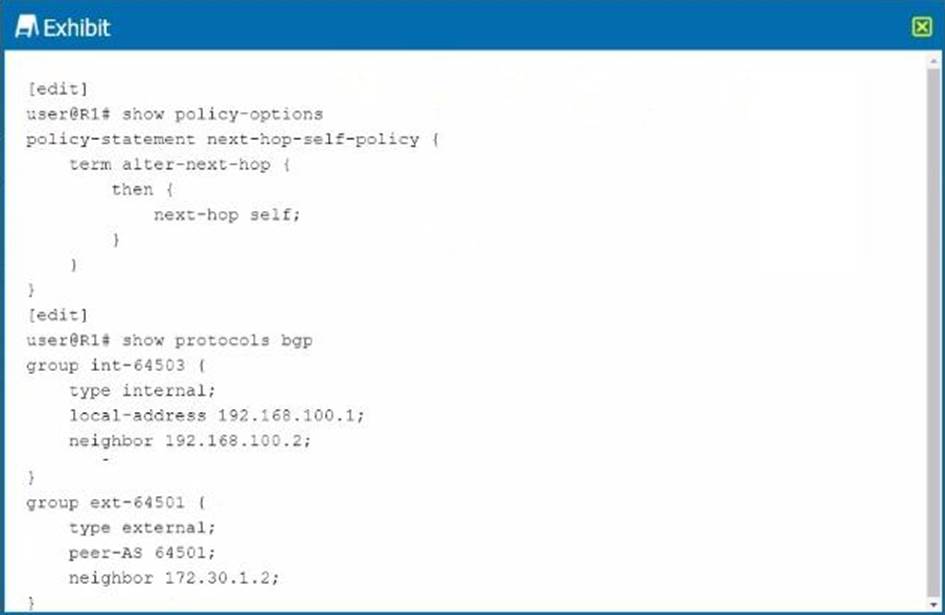
Referring to the exhibit, where should next-hop-self-policy be applied to alter the next-hop value?
- A . The policy is applied as an export policy for the group int-64503.
- B . The policy is applied as an export policy for the group ext-64501.
- C . The policy is applied as an import policy for the group int- 64 503.
- D . The policy is applied as an Import policy for the group ext-64501.
Which statement describes integrated routing and bridging (IRB) interfaces?
- A . An IRB interface Is an IP gateway For hosts of a bridge domain.
- B . An IRB interface assigns interfaces to VLANs.
- C . An IRB interface enables Layer 2 switching on the router.
- D . An IRB interface defines a bridge domain.
Exhibit
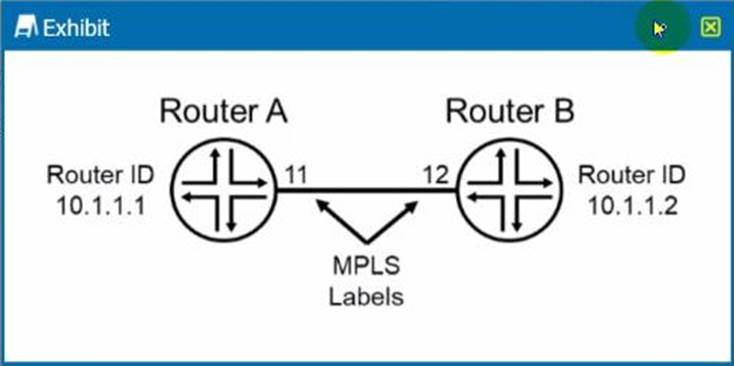
The routers shown in the exhibit ate configured for segment routing.
In this scenario, what is the adjacency SIO that Router B advertises to Router A?
- A . 12
- B . 10.1.1.1
- C . 10.1.1.2
- D . 11
You have created a routing instance named vr3 that will provide access to Server 2 (10.0.0.2) (or the hosts on the 10.10.10.0/24 network.
Which command would you use to test connectivity between vr3 and Server 2?
- A . user@vr3> ping 10.0.0.2 count 5
- B . user@vr3> ping 10.0.0.2 count 5 source 10.10.10.1
- C . user9router1> ping 10.0.0.2 count 5
- D . user@router1> ping 10.0.0.2 routing-instance vr3 count 5
Which configuration selling prohibits a static route from being redistributed by a dynamic routing protocol?
- A . route-filter
- B . no-readvertise
- C . qualified-next-hop
- D . passive
Exhibit
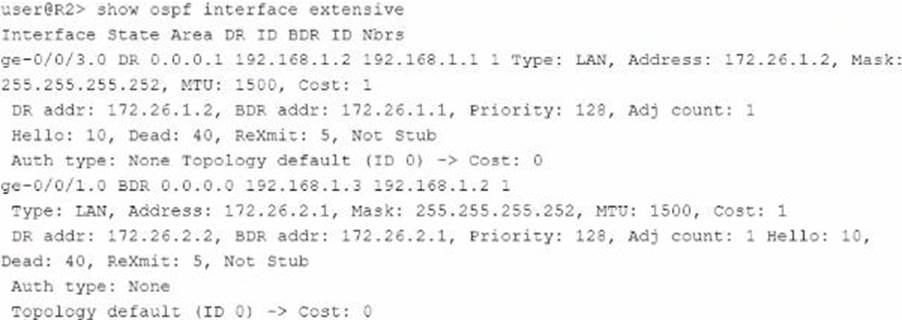
Referring to the exhibit, which two statements are correct? (Choose two.)
- A . The OSPF Interfaces are configured as point-to-point.
- B . The ge-0/0’1.0 Interface is configured as passive.
- C . The R2 device is an ABR.
- D . Junos OS default OSPF hello timers and dead intervals are used on all interfaces.
You are asked to create connections between routing instances on the same Junos device and route between the connected Instances.
What are two ways to accomplish this task? (Choose two.)
- A . Use physical interfaces.
- B . Use an IRB interface.
- C . Use logical tunnel interfaces.
- D . Use loopback interfaces.
Exhibit.
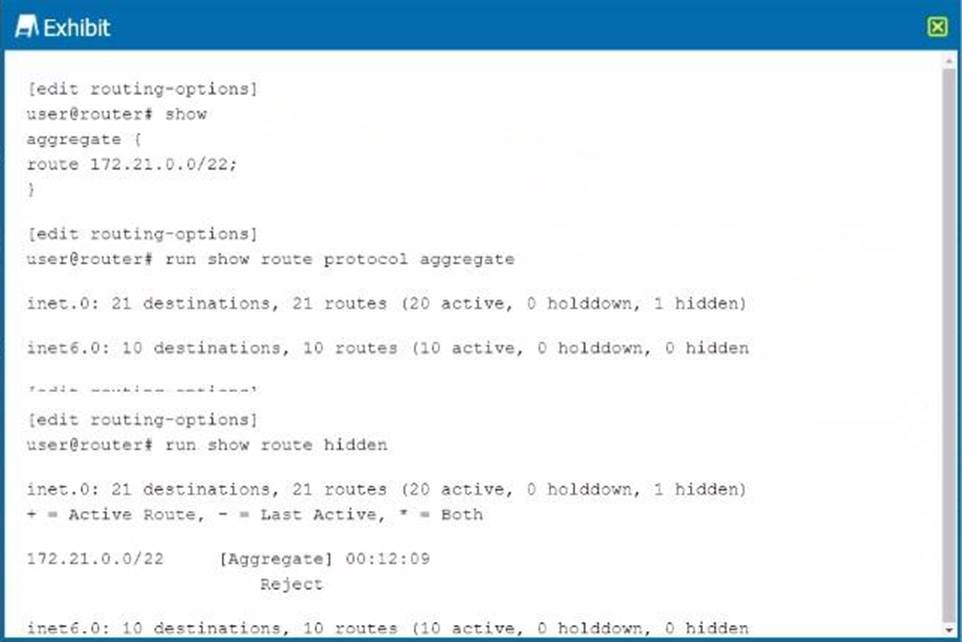
Referring to the exhibit, you have configured an aggregate route that represents the 172.21.0.0/24, 172.21.1.0/24, and 172.21.2.0/24 networks. However, when you view the routing table, your new route hidden.
Which action would you perform to determine the problem?
- A . Verify that you have active contributing routes on the device.
- B . Verify that you have configured a policy on the device to accept aggregate routes.
- C . Verify that you have defined a metric value for the aggregate route.
- D . Verify that you have set the preference to a lower default value.
You are adding an IPv6 configuration to an Interface on a Junos device.
In this scenario, which statement is correct?
- A . The link local address must be manually configured within the fdO0::/8 prefix range.
- B . The link local address must be manually configured within the fe80::/10 prefix range.
- C . The link local address is automatically created using the MAC address within the fe80::’l0 prefix range.
- D . The link local address is automatically created using the MAC address within the fd00::/8 prefix range.
Exhibit
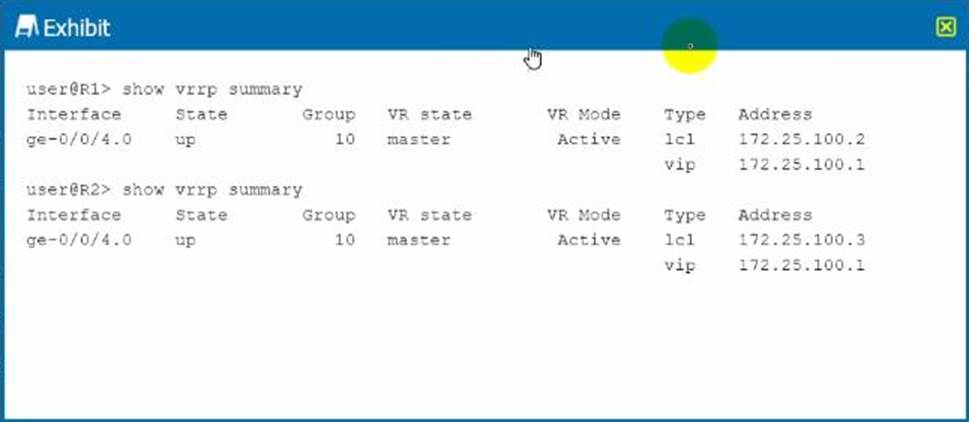
Referring to the exhibit, which statement is true about VRRP?
- A . VRRP communication between the two devices is not functioning correctly.
- B . Both routers are in the same state because they have the same VRRP priority.
- C . RRP Is functioning normally in active/active mode.
- D . The routers should use different virtual IP addresses for VRRP to function correctly.
Latest JN0-363 Dumps Valid Version with 65 Q&As
Latest And Valid Q&A | Instant Download | Once Fail, Full Refund

